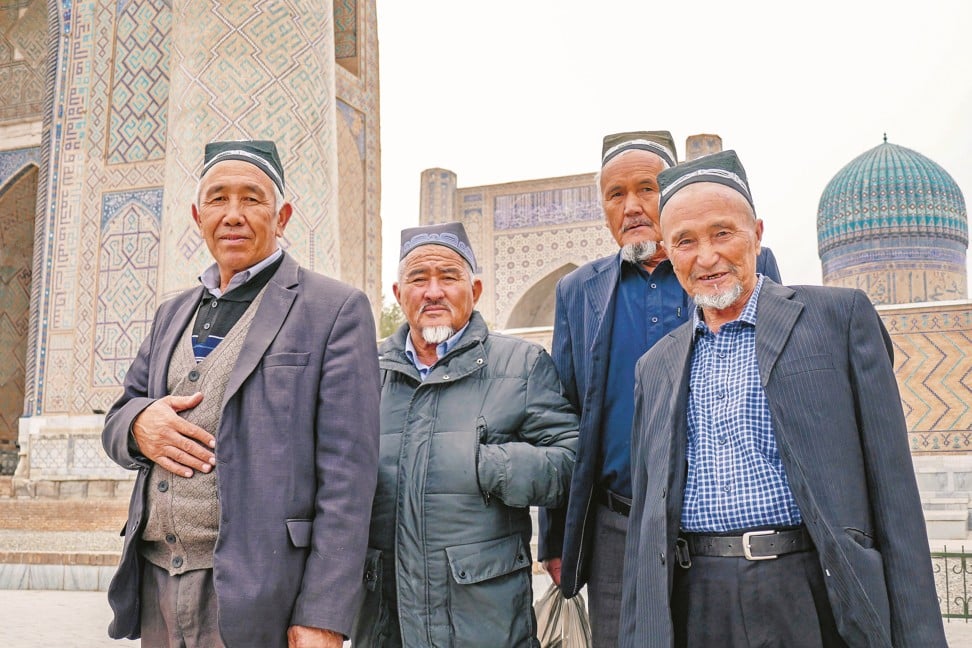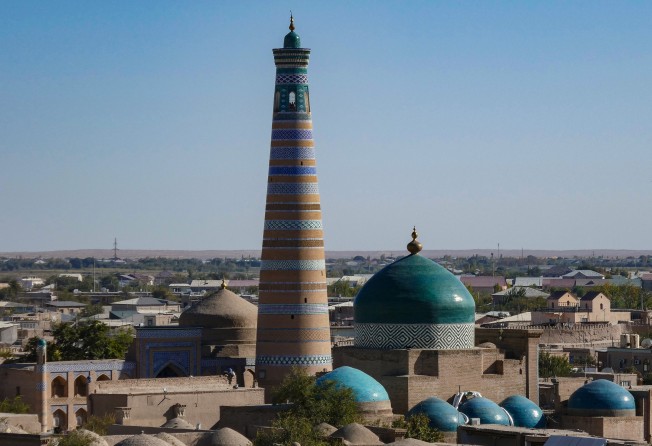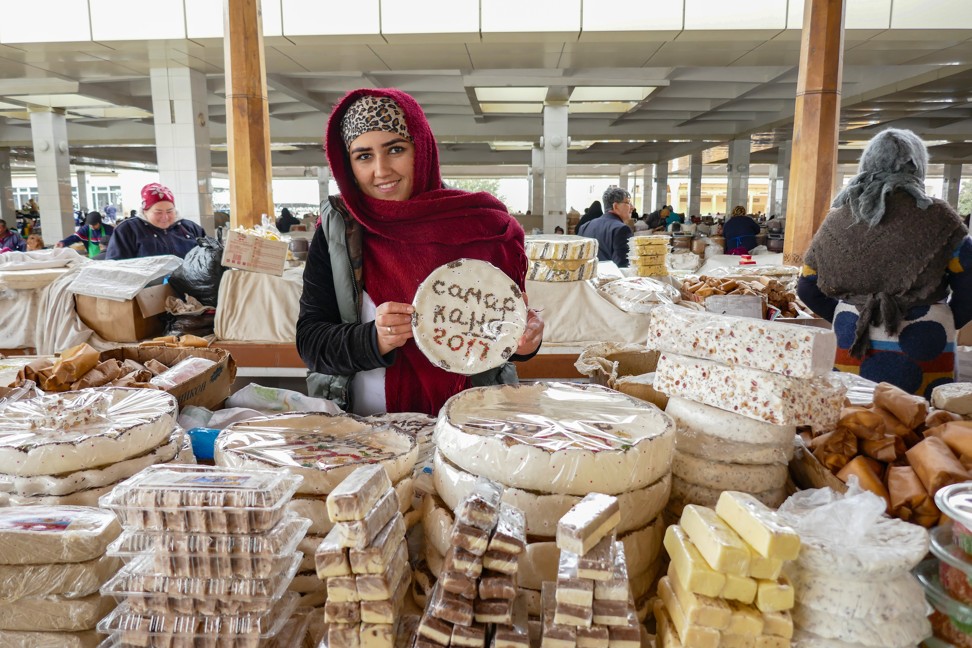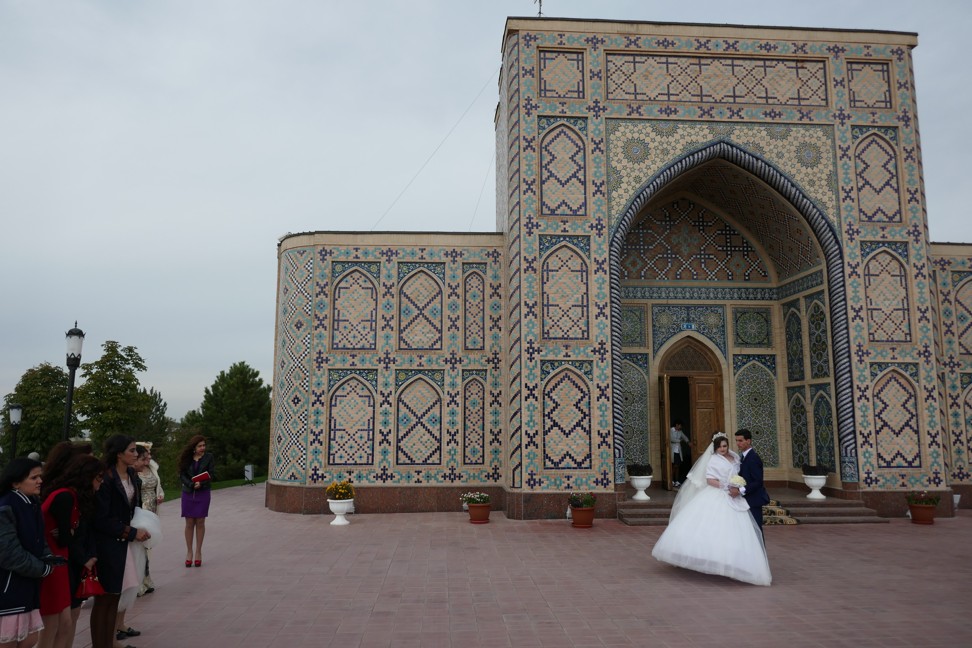
Five reasons to visit Uzbekistan, from Unesco heritage sites on the old Silk Road to mighty mosques
It might seem a bit off the beaten track but with tourism high on the agenda for the country’s new president, now is the time to see Uzbekistan’s ancient cities, atmospheric markets and fast-developing metropolises

In the heart of Central Asia, Uzbekistan has felt the footsteps of Alexander the Great, Marco Polo and Genghis Khan, and for centuries it was home to overland trade routes known collectively as the Great Silk Road that linked China with the Middle East and Europe.
This land of 32 million, however, is a mostly Islamic former Soviet state best known for being the domain of its authoritarian ruler Islam Karimov, who died last year. New president Shavkat Mirziyayev appears to be modernising the country, with tourism high on the agenda.
Whether Uzbekistan will become a transcontinental tourist route remains to be seen, but it certainly has the potential. Within its borders are some of the most ancient and evocative cities in the world and it has four Unesco World Heritage Sites. The food – from the ubiquitous national dish plov (rice, meat, grated carrots and onions) to shashlik kebabs – is consistently delicious, and there are now some surprisingly good Uzbek wines (particularly in Bukhara), though the nightlife scene is low-key.
While you can do the main sights in a week (though it is easier in 10 days), Uzbekistan is not a place you can easily explore on your own, despite the surprisingly efficient trains and planes. International tourists are not yet allowed to rent cars, so you will need to hire a local guide or take an organised tour. That, though, is for the best, as there is so much history to explore and the vast country has myriad tribal cultures and customs.

Here are some of the best things to see and do in the country.
Glimpse the Silk Road in Khiva
It is hard to resist a well-preserved ancient city, but Khiva, an old stop-off for caravans on the ancient Silk Road, provides both authenticity and atmosphere.
Surrounded by high walls, the small, car-free inner area of Itchan Kala (a Unesco World Heritage Site) is a warren of thoroughfares and narrow walkways between madrassas, mosques, minarets, ancient palaces and cafes.
Somewhat reminiscent of the forts of Oman, and of Marrakesh in Morocco, Itchan Kala’s two 19th-century palaces are stirring reminders of how intricate and impressive Islamic architecture is. The most picturesque sight, though, is probably the Kalta Minor, an unfinished minaret near the West Gate. Standing 26 metres tall, it is exquisitely decorated in turquoise tiles and decorative bands.
At the busy bazaar just outside the East Gate, sellers are decked in traditional woollen black hats (Khiva is within the semi-autonomous region of Karakalpakstan, which translates as Land of the Black Hats).
Already bustling, this impossibly beautiful city is likely to soon be crammed with tourists, so go before the hordes arrive. It is most easily reached via a 40-minute taxi from Urgench airport, which is an hour’s flight from the country’s main international airport in the capital, Tashkent.

Speed to Samarkand
Uzbekistan may traditionally be more famous for camels and caravans travelling across Eurasia on the old Silk Road trade routes, but things have moved on. Spanish-made high-speed trains, called Afrosiyob, take only two hours to travel the 256 kilometres between train stations in Tashkent and Samarkand, and have done since 2011.
The trains represent modern Uzbekistan in a nutshell; clean, well-ordered, but lacking in customer service. The staff offer every traveller a free drink, but the best advice is to take what you’re given – a request for coffee rather than tea will almost certainly result in you getting nothing at all. There are plans to add a further high-speed rail link to Khiva 1,000km to the north.

Visit a bazaar to see Uzbek daily life
Samarkand is mostly known for the mighty Registan, a vast square at the heart of the ancient city flanked on three sides by 32-metre-high madrassas. The imposing size of their doorways, minarets and turquoise cupolas are impressive, and it is all best viewed early in the morning.
Just as interesting is Samarkand’s busy Siab Bazaar. Found at the end of a well-trodden tourist street of souvenir shops, it’s the perfect antidote to the many ceramics, carpets and embroidery found all over Uzbekistan. Here you will find women selling local snacks such as halva (a flaky, nutty nougat), samsa (pastry containing mutton or beef and sweet, delicious onion), nuts, honey and pomegranates (an Uzbeki staple). It may not be on the core Samarkand itinerary, but it should be; Siab Bazaar is an easily digestible slice of the old Silk Road.

Unlock the Universe
Think back to your geography lessons and you will recall that the Earth’s axis is tilted 23.5 degrees from the plane of its orbit around the sun. Ulugh Beg, a 15th-century ruler of the Timurid Empire in Central Asia, discovered this by creating the world’s first sextant to measure the elevation of stars.
You can see the remains of this contraption at the Ulugh Beg Observatory in Samarkand where, on a small hill overlooking the southeast of the city, a trench contains the remains of his “Fakhri sextant”, which once stretched as high as three storeys. Here, Beg calculated sunrise times, the exact point of midday (by observing the height of the sun), the Earth’s tilt, and the exact length of a year (he was out by one minute).
Overlooked by modern astronomy, Beg’s work is easily as important as that of Galileo, Copernicus and Kepler, and there is an excellent small museum here that puts his work into context.

Marvel at Tashkent’s mighty mosques
Uzbekistan’s capital is not a must-see city of ancient buildings (a huge earthquake in 1966 levelled many of them), but it is fast modernising and has huge swathes of parks. There is an open-top double-decker bus tour of the city, though on its myriad stops only the Chorsu Bazaar and the city’s two main mosques are worth a stop.
The highlight is the Minor Mosque, which is just three years old, in the new part of the city. Its immaculate white marble makes it a stunningly bright sight if the sun is out. When it starts to sink, head over to the 16th-century brick-built Khazrati Imam mosque, where the late afternoon sun lights it up in warm orange.
Getting there
Although there is no direct flight from Hong Kong, Uzbekistan Airways (uzairways.com) flies to Tashkent from Bangkok, Singapore and Kuala Lumpur.